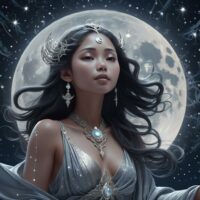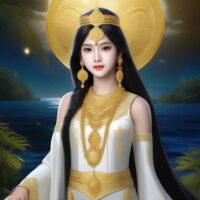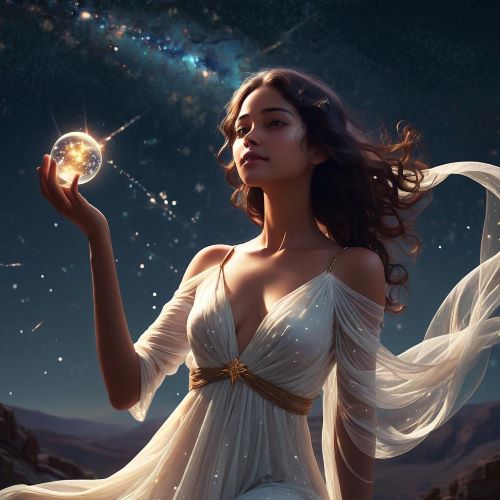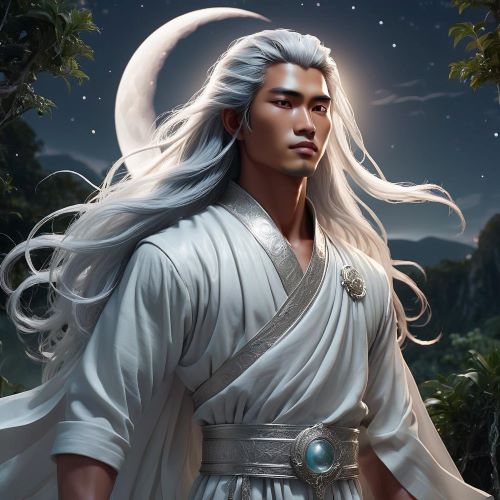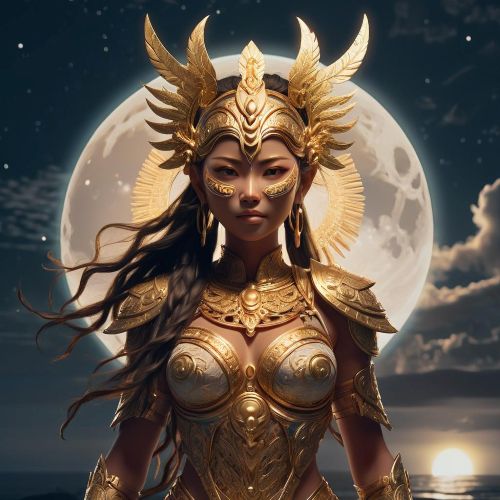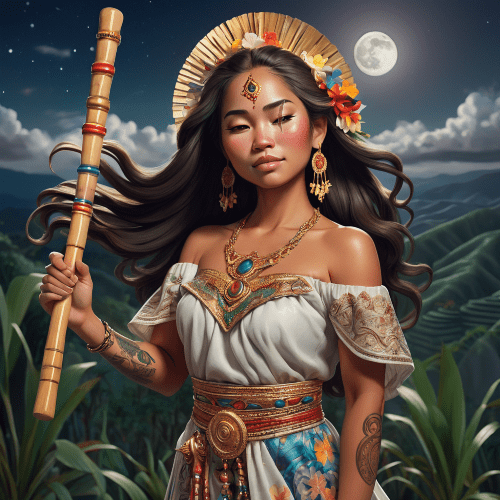Buan : The Moon Goddess
Listen
At a glance
| Description | |
|---|---|
| Origin | Philippine Mythology |
| Classification | Gods |
| Family Members | Araw (Brother) |
| Region | Philippines |
| Associated With | Moon |
Buan
Introduction
Buan stands as a significant figure in Philippine mythology, representing the moon and its many mysteries. Worshipped across diverse regions and cultures in the archipelago, Buan embodies not just celestial light but the deeper symbolism of femininity, balance, and the cycles of nature. Often paired with the sun deity Araw, Buan plays an integral role in shaping the mythic understanding of night and day, light and darkness, and conflict and harmony. As different communities across the Philippines told their own versions of the lunar mythos, Buan’s image evolved, adapting to regional customs while preserving the core theme of cosmic duality.
Physical Traits
Depictions of Buan reflect the moon’s beauty and gentle glow. Across various traditions, she is often imagined as an ethereal and luminous presence in the sky. One striking detail in some versions of the myth describes Buan as having a radiant diamond embedded in her forehead, symbolizing her role as the light in the dark. Her appearance may shift slightly depending on the story—some portray her with silver skin, others with flowing garments that shimmer like moonlight. What remains constant is her graceful, almost sorrowful demeanor, suggesting the quiet dignity of the moon as it watches over the world in silence. The loss or diminishing of her light in some narratives further enhances her mystical and poignant aura.
Family
Buan’s relationships with other deities add emotional depth to her myth. In certain Tagalog stories, she is the sister of Araw, the sun god, and their once-shared bond becomes strained due to rivalry and betrayal. A maternal figure—sometimes a fairy or a goddess—acts as an intercessor or a catalyst for the conflict between them. The discord between Buan and Araw often results in their separation across the sky, providing a divine explanation for the alternating cycles of day and night.
In other accounts, the wind god Lihangin intervenes, trying to mediate peace between the celestial siblings. These complex familial ties suggest that the mythology is more than just cosmological; it’s also a lens into Filipino values around kinship, conflict resolution, and the balance of opposites. Unlike many Western myths where the moon and sun are unrelated, Philippine myth often frames their relationship as a family drama with cosmic consequences.
Other names
The identity of Buan is known by multiple names throughout the Philippine islands. In Tagalog, “Buan” or “Buwan” directly translates to “moon,” but other regions have distinct names and interpretations. In the Visayan region, she is sometimes called Libulan, while the Bikolanos refer to a similar moon figure named Bulan. These variations are not just linguistic but also cultural, each version adapting the deity to fit local beliefs and storytelling traditions. Occasionally, Buan is merged or confused with Mayari, another lunar deity in Tagalog mythology, though Mayari tends to have her own separate mythology involving battles for divine rule. These overlaps demonstrate the fluid nature of oral traditions, where characters evolve and intermix across generations and geography.
Powers and Abilities
Buan’s powers are deeply tied to her control over lunar light and the natural rhythms it governs. Her influence reaches beyond the sky—affecting the tides, agricultural practices, human fertility, and even emotional states. Farmers once planned harvests by the phases of the moon, while fishermen timed their outings based on Buan’s light. In myth, Buan’s radiance was once equal to Araw’s, but due to a divine falling out, she was punished and her brilliance reduced. Her shattered form became stars, while her diminished presence explains the moon’s soft glow compared to the blazing sun.
This story of loss is not one of weakness but of transformation. Even in her fractured state, Buan continues to light the night and guide those in darkness. In some traditions, she is said to influence dreams and intuition, making her a powerful symbol in both the physical and spiritual realms. Her ability to appear during the day as a pale silhouette is also interpreted as an act of quiet defiance or longing, adding layers of symbolism to her character.
Modern Day Influence
Buan’s mythology remains deeply embedded in Filipino culture, surviving colonization and modernization through oral storytelling, folk literature, and education. She is a figure frequently cited in schools as part of lessons on pre-colonial beliefs, instilling cultural pride in young learners. Her story is also retold through folk songs, traditional dances, and modern retellings in Philippine literature, especially in fantasy genres that draw from indigenous myth.
Contemporary art and media have also begun to reimagine Buan in new forms. From graphic novels and AI-generated images to digital murals and animation, she now appears not just as a mythological figure but as a symbol of resilience and mystique. Themes of divine rivalry, broken brilliance, and the quiet strength of the moon have made Buan a relevant archetype in discussions around gender identity, mental health, and indigenous feminism.
Even in popular culture, the name Buan holds resonance. It appears in songs, brand names, and even personal identities, showing how ancient stories continue to inform modern expression. Figures such as journalist Lian Buan bring further recognition to the name in contemporary contexts, connecting mythology with real-world relevance. Though not directly linked to the deity, such public figures help carry forward the cultural memory associated with the name.
Related Images
Source
Eugenio, D. L. (1993). Philippine Folk Literature: The Myths. University of the Philippines Press.
Tagalog Myths of the Sun (Araw) and Moon (Buwan).” Aswang Project. (2021). Retrieved from https://www.aswangproject.com/tagalog-sun-moon/
Philippine Mythology. Wikipedia. Retrieved from https://en.wikipedia.org/wiki/Philippine_mythology
“Buan and Modern Media.” CMFR – Center for Media Freedom and Responsibility. (2023). Retrieved from https://cmfr-phil.org/media-ethics-responsibility/journalism-review/buans-icc-reporting-shines-through/
Frequently Asked Questions
What is lorem Ipsum?
I am text block. Click edit button to change this text. Lorem ipsum dolor sit amet, consectetur adipiscing elit. Ut elit tellus, luctus nec ullamcorper mattis, pulvinar dapibus leo.
What is lorem Ipsum?
I am text block. Click edit button to change this text. Lorem ipsum dolor sit amet, consectetur adipiscing elit. Ut elit tellus, luctus nec ullamcorper mattis, pulvinar dapibus leo.
What is lorem Ipsum?
I am text block. Click edit button to change this text. Lorem ipsum dolor sit amet, consectetur adipiscing elit. Ut elit tellus, luctus nec ullamcorper mattis, pulvinar dapibus leo.
What is lorem Ipsum?
I am text block. Click edit button to change this text. Lorem ipsum dolor sit amet, consectetur adipiscing elit. Ut elit tellus, luctus nec ullamcorper mattis, pulvinar dapibus leo.
What is lorem Ipsum?
I am text block. Click edit button to change this text. Lorem ipsum dolor sit amet, consectetur adipiscing elit. Ut elit tellus, luctus nec ullamcorper mattis, pulvinar dapibus leo.


